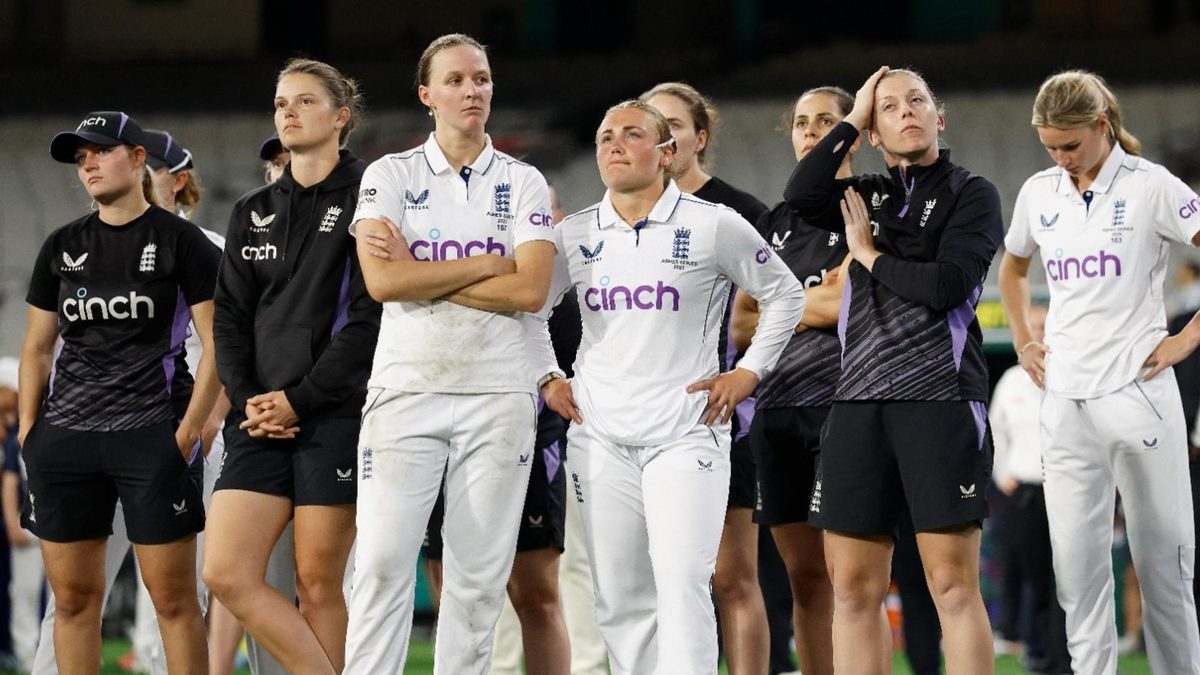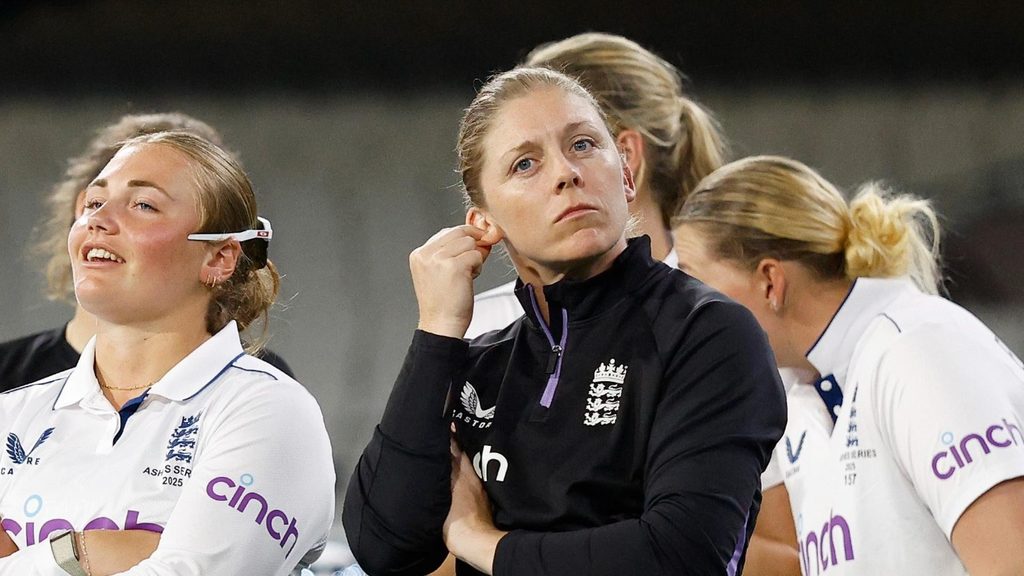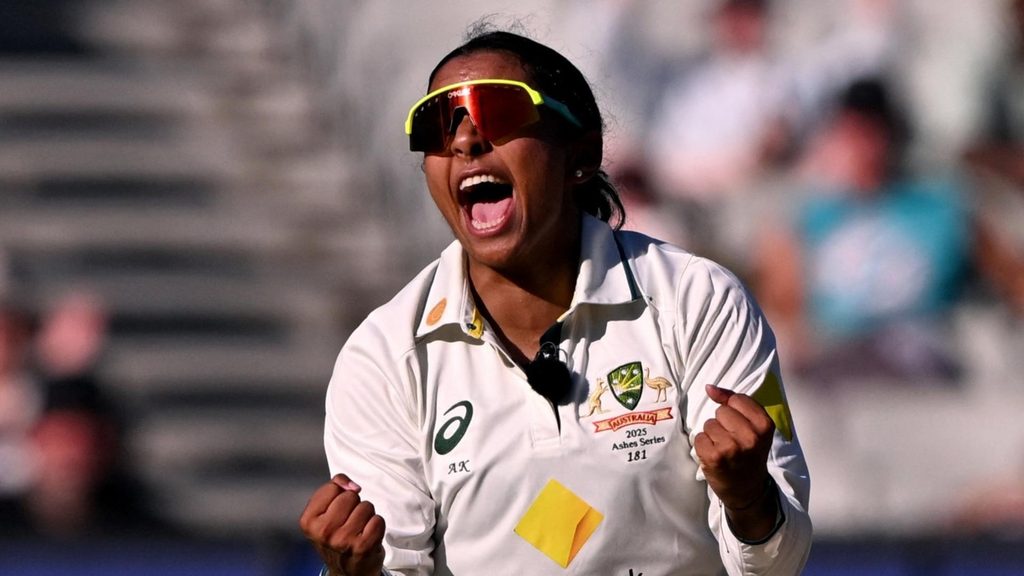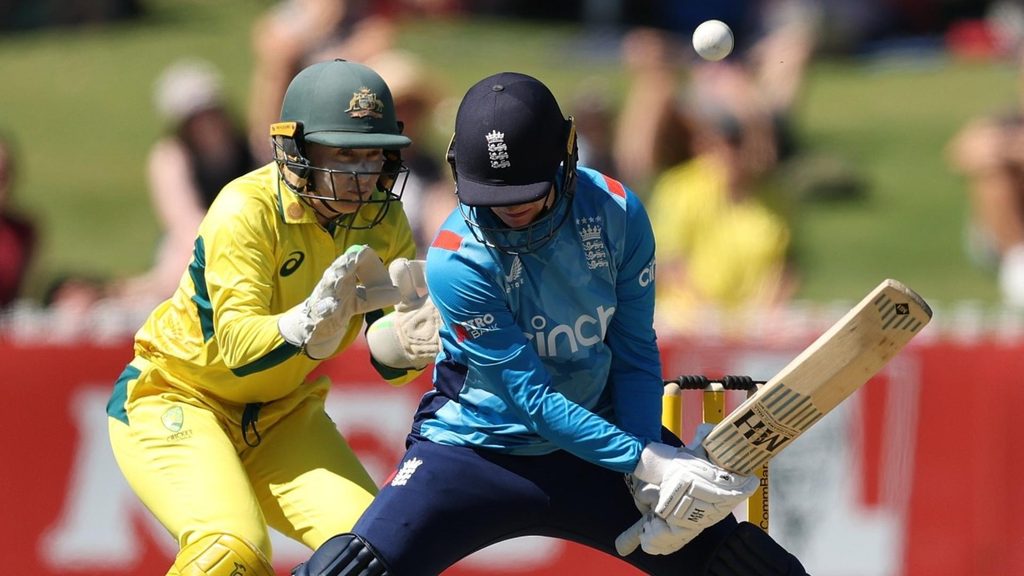
The cracks in England’s foundations in Australia were clear to see almost from ball one, but it was only once the final brick was torn down in Melbourne that the full scale of the catastrophe could be seen.
On the eve of the opening match of the series in Sydney, Heather Knight spoke bullishly of Australian scars from 2023 and her side’s recent win in South Africa. She urged her players to "disrupt" a strong Australia side and go one better than they had done 18 months before. Three weeks later, she stood on the outfield at the MCG answering questions over whether her leadership could survive a worst-ever Ashes defeat.
Few genuinely believed England would win in Australia for the first time since 2014, but predictions of a 16-0 whitewash also didn’t feature on most cards. Over the course of seven matches, England took hit after hit, endured media storms and looked progressively more shell-shocked until the final wicket fell in Melbourne.
Now, with the future personnel of the side uncertain and a full scale review into the defeat launched, England have to answer the question with seemingly 1,000 answers. What went wrong?

Did England drop the Ashes?
Dropped catches mean more against Australia. With proper all-rounders all the way down to the lower order, creating 10 chances against indisputably the best batting side in the world in each match is a tall enough order. England had the bowlers to do that in this series, but their fielders consistently demanded more opportunities for them to stick.
Three dropped catches stand out. The first was five overs into England’s first fielding innings of the tour. After Lauren Filer bowled a snorter to get Phoebe Litchfield out in her first over, she sent Ellyse Perry a bouncer which was hooked straight to Alice Capsey at fine leg. She didn’t have to move to take a catch which would have left Australia two down in the powerplay, still needing 180 to win but, inexplicably, the ball spilled straight out of her hands on impact.
It bore similarities to another Capsey drop two months earlier in England’s T20 World Cup defeat to the West Indies, the loss that Jon Lewis said prior to the series that had been “a line in the sand” for the side. Earlier in the opening ODI, Perry herself had taken a catch running and diving forward in the deep to dismiss Knight, highlighting at the earliest possible opportunity the seismic difference between the two sides in the field.
The second catch that stands out was in the first T20I, the match in which England lost any hope of mounting a second consecutive points comeback. With Beth Mooney on 23, she and Litchfield looking poised to mount a big partnership, she miscued a ball from Sarah Glenn between mid-off and cover on the edge of the circle. As the ball ballooned up, both Nat Sciver-Brunt and Charlie Dean left it for the other to get. Mooney went on to score 75 as Australia set a target of almost 200.
Following the second T20I, Lewis highlighted the cultural differences between England and Australia to explain the disparity in athleticism between the two sides. There may be merit in that argument to illustrate the differences in the talent pool beneath the professional level in the two countries. But, it does not address the huge contrast between the athleticism and professionalism of the players on the field.
England’s most damning day in the field however, was their last. During Australia’s innings in the Test match in Melbourne, England dropped seven catches as both Mooney and Annabel Sutherland piled on the runs. Despite the dire days in the white-ball formats, the second day at the MCG showed the real depth of England’s shortcomings, which were pinpointed by Sophie Ecclestone dropping a sitter at slip off Ash Gardner in the evening session. Immediately following the drop, Knight took Ecclestone out of the position and occupied it herself.
There are two issues at play here. One is why Ecclestone was in that position in the first place. She regularly fields at slip for England, despite having a pretty poor record there over the last couple of years. That she’s still routinely put in the slips is one of a number of examples of rigidity in England’s thought-process and unwillingness to abandon established plans that aren’t working.
The other issue is the long-cited pressure problem. There are countless examples of England folding under pressure going back a number of years. You can look back past the T20 World Cup to points in the 2023 Ashes and that year’s T20 World Cup where England crumbled from winning positions.
Speaking after the series, ECB head of women’s cricket Clare Connor addressed the issue. “As a collective we have to be honest and say that we haven’t handled the pressure of this series in the way that we want to, and we’ll need to compete in future Ashes and a World Cup every year. That’ll be a key area of focus now, and how we fast track that capability.”
Connor went further to question whether bilateral series in between Ashes and ICC competitions create the same intensity or pressure that sides face in knockout competitions. She also voiced the possibility of artificially creating pressure-scenarios to deal with the deficiency. However, the issue of whether England players should be playing more games in the domestic season, was not addressed.
England's spin cycle
More than two years on since Shane Warne’s death, a different King ripped the ball off the MCG surface against England. Alana King’s ball to Sophia Dunkley, reminiscent of the Godfather of leg-spin and bowled with the stand named after him in the background, was the culmination of a series of complete dominance against England’s batters.
That dominance was sewn early - King took 11 of her 23 wickets in the ODI series alone. She and Ash Gardner - who took nine wickets across the four matches her injury allowed her to play - exploited a weakness that England’s coach had predicted.

At the end of the 2023 summer, after England had been dismantled by Sri Lanka, Lewis said: “Off the back of the Ashes, and from what I saw in the [2023] World Cup, it’s pretty clear the way we play spin bowling is a big area of development for us… People will watch us play spin and they’ll go, ‘right, okay, we think we can exploit this team in that area.’”
Following that loss and ahead of a series in India, England sent six players out to India on a bootcamp in facing spin bowling. Those players were Sophia Dunkley, Alice Capsey, Emma Lamb, Dani Gibson, Freya Kemp and Bess Heath. Only one of those players, Dunkley, regularly bats in England’s top six across all formats.
Since the beginning of 2023, seven of Amy Jones’ 11 dismissals in ODIs have been to spinners, as have nine of Danni Wyatt-Hodge’s 12. England were annihilated in a Test match in India in 2023, when Deepti Sharma took nine wickets in the 13 overs she bowled. Their issues against spin are a long-standing problem which have not been effectively resolved.
The absence of England’s senior players from that spin camp speaks to an atmosphere of complacency that Connor was at pains to deny following the Ashes defeat. England’s senior players in Knight, Sciver-Brunt, Jones, and Wyatt-Hodge have been in the side pretty much without interruption for over a decade. The lack of players coming up behind them and genuinely pushing their place in the side means their positions are rarely under real threat, and personal jeopardy is largely absent from defeats.
“This group of players care deeply about playing for England, and they will be hurting,” said Connor. “They are hurting hugely from what’s happened over this last month. There isn’t a lack of professionalism, and I don’t recognise a cosiness.”
The deeper issue behind the lack of competition for places is at the crux of why England are so far behind Australia. King hadn’t played a T20I for Australia since 2022 before the Ashes series. She’s been kept out by Gardner and Sophie Molineux, who was injured during this series. Equally, when Healy was out of action, they were able to turn to Georgia Voll, a 19-year-old who scored a century against India in her second match of international cricket.
Australia’s young and fringe players are ready for international cricket when they’re called up. England haven’t had a batter fully establish themselves in their top six in years, with no one who has debuted in the last decade reaching 1,000 runs in either ODI or T20I cricket. When they sent a second-string side to tour Ireland at the end of last summer, with players who are their frontline back-ups, they lost two matches and again showed frailties under pressure.
Don't hate the players, hate the gameplan...
Speaking after losing the second ODI, in which England had bowled Australia out for the lowest score they’d managed to in 12 years, Heather Knight summarised her side’s shortcomings in the match. “We need to be braver with the bat,” she said. “We’re really close. We just need to do a few things better in a few areas.”
Moments earlier, Amy Jones had made a crucial error at the end of the game. Unaware that she was facing the final ball of the over, with 22 runs still required to win, Jones had failed to take the single on offer, leaving Lauren Bell to be bowled by Megan Schutt’s first delivery.
While that mistake showed the shortcomings in England’s game awareness, it wasn’t where the match was lost. There was the attempted scoop shot from Charlie Dean in King’s last over, which resulted in a top edge straight to slip. There was the chaotic run out four overs later. But the foundations for the loss were laid in another top order collapse which left them 120-5.

Most jarring about Knight’s suggestion that England should’ve been ‘braver’ was how at odds it was with Capsey’s assessment. Capsey had scored a 35-ball 14, in a partnership with Jones which gave England brief hope of getting over the line. Speaking after the match, Capsey said: “How we thought best to play the situation was to play the ball on merit… The difference between balls and runs required was big enough that, especially for me and Jonesy anyway, when we’re reacting to the ball instinctively and just playing the ball on merit, that’s us at our best.”
Under Lewis’ leadership over the last two years, England have looked to play an expansive brand of cricket, especially with the bat, under the brief to ‘inspire and entertain’. Since Lewis took over in late 2022, England and Australia are the only two sides to have scored their runs at more than eight an over in T20 cricket. It’s a similar story in ODIs, with England and Australia again the two highest-striking teams, although with India a closer third.
However, when comparing how that approach has translated into results, England have lost almost double the T20Is Australia have in that time. In ODIs, they’ve played 18 and lost seven, one less than India and four more than Australia.
It’s improbable that England’s leadership duo will make it through the pending inquest. Lewis insisted he was keen to continue after the MCG, against the backdrop of former Australia women’s and England men’s coach Matthew Mott commentating on the match, while Charlotte Edwards continues to fulfill her multiple coaching roles around the world.
Knight refused to commit to her playing future following the Test defeat. Having captained England through a period of huge upheaval, to their most memorable win in the 2017 World Cup, through a pandemic and heavy lows, she’s bound up in the identity of the side. Stepping down at England’s lowest point would be a devastating end to her reign.
Australia’s all-encompassing superiority
There is a simplicity in a 16-0 scoreline. Irrefutably, Australia were far better than England in every aspect of the game.
Beth Mooney scored almost double the runs across the series of England’s leading runscorer, while Annabel Sutherland’s Test match dominance once again left the tourists floundering for answers. It was Kim Garth and Darcie Brown who made crucial breakthroughs on the first morning of the Test, while England’s seamers watched as chances went begging.
“It’s been very evident that the Australia women’s cricket team are setting new standards of athleticism in our sport, and that’s obviously an area where we have been outshone,” said Connor. “Credit to Australia for taking the standards of international women’s cricket to another level over the last month. Their ruthlessness in doing that is admirable and I think will give us a huge amount to think about as we go home and reflect.”
Some of the narrative going into the series was of whether Australia retained the same level of dominance over the international hierarchy that they had done over the late 2010s and early 2020s. This was particularly based on their early exit from the 2024 T20 World Cup, as well as their white-ball series losses in the 2023 Ashes. However, some of this was clearly misjudged.
Since October 2021, Australia have only lost three ODIs out of the 27 they’ve played. Within those wins, only two were achieved by a less than 20-run or three-wicket margin. The true dominance they hold is rooted in how far they sped ahead of the pack through their early investments.
The first retainer contracts were introduced for female Australia players in the late 2000s meaning players no longer had to pay to tour. Players became full members of the Cricketers’ Association in 2011 and saw a major pay rise to earn between $25,000 and $52,000 in 2013, the same time as central contracts were first introduced in England.
In 2017, an agreement was made where female players were included alongside the men in a revenue sharing model for the first time. That drove up the minimum earnings of a CA-contracted female player by tens of thousands of dollars, with the same replicated at domestic levels. England didn’t bring in domestic deals until 2019.
The early investment Cricket Australia injected into its women’s national side and their domestic set-up has bred an environment of professionalism and expected standards that have been far superior for a long time than any other side in the world.
The review England will conduct into this defeat will try to encompass all areas and pinpoint where ‘the gap’ can be made up ahead of another World Cup in seven months’ time. Bridging a gap carved out by decisions made over a decade ago isn’t the quick fix England need it to be to meet the standards they’re now expected to, however. Quite rightly, Australia still reap the rewards of fostering an elite atmosphere that’s kept them ahead of the curve.
Follow Wisden for all cricket updates, including live scores, match stats, quizzes and more. Stay up to date with the latest cricket news, player updates, team standings, match highlights, video analysis and live match odds.








